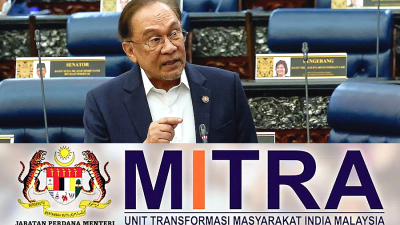
Southeast Asia has moved fast from cash to digital rails: QR payments, mobile wallets and instant retail systems became widespread after the pandemic, and regional policy actors are now trying to stitch national instant-payment systems together to lower remittance costs and speed cross-border retail payments.
The International Monetary Fund has argued that these efforts—from bilateral links to a multilateral network—could transform cross-border retail transfers and commerce if technical and governance hurdles are tackled.
However, realism demands a sober account of persistent socio-economic obstacles.
First, access and infrastructure remain uneven. Urban centers and major corridors enjoy relatively deep 4G/5G coverage and high smartphone penetration, while rural and island peripheries still contend with unreliable connectivity and high data costs.
That digital divide translates directly into uneven financial inclusion: without affordable, resilient connectivity and devices, entire segments (smallholder farmers, migrant laborers, older citizens) are excluded from the promised gains of digital transfers.
The World Bank’s Global Findex and related regional diagnostics show that account ownership and active use still lag among women and rural households, even as account openings rise overall.
Second, institutional fragmentation and regulatory heterogeneity across the region create interoperability and trust problems.
Payment systems differ—bank-led real-time rails, mobile-wallet ecosystems, and emerging CBDC pilots—while KYC, AML/CFT, and consumer-protection rules vary by jurisdiction.
These differences raise compliance costs for cross-border flows and complicate the “connect the rails” ambition. Project Nexus and BIS-led initiatives show technical linking is feasible, but governance alignment (who bears liability, dispute resolution, standard KYC) is political and slow.
Recent reports on planned Nexus linkages underscore the project’s promise but also the challenge of scaling beyond early adopters.
Third, the political-economy of finance-capital dependency matters.
Many Southeast Asian fintech ecosystems are shaped by foreign platform providers, large global cloud and payments firms, and foreign capital seeking scale.
This produces two linked problems:
■ Value leakage: Profits, data rents and network effects accrue to dominant external platforms rather than local firms or state treasuries, and
■ Strategic dependency; National policy choices (data localization, taxation, competition policy) are constrained by dependence on foreign technology and capital.
In a post-colonial frame, the risk is that digital transfer architectures reproduce extractive financial relations under a technology guise unless deliberate local value-capture measures are adopted.
Evidence from mobile-money growth and platform expansion suggests huge adoption but also concentration risks.
Fourth, social trust, literacy and security shape uptake. Digital payments scale only when users trust systems and understand protections.
Cyberfraud is rising in many markets; consumers who lose funds or fall prey to scams retreat to cash. Women and marginalized groups often face higher barriers (ID registration, device access, digital skills) so digital transfers risk deepening inequality unless programs target these groups.
The Asian Development Bank and regional policy studies emphasize digital skills, consumer protection, and green/affordable infrastructure as preconditions for inclusive outcomes.
Finally, geopolitics and macroeconomic volatility can interrupt progress.
Exchange controls, capital flow volatility, and trade tensions influence regulators’ willingness to liberalize cross-border rails.
Tariff wars or sanctions can disrupt partnerships and cloud provisioning.
The region’s multiple development trajectories mean some states will prioritize platform control and data sovereignty (tighter regulation), while others favor open integration to attract foreign investment—yielding uneven regional outcomes.
What policy package would make the IMF’s “payment push” a reality and reduce dependency-driven harms?
First, multilateral technical standards must be matched by regional governance: agreed KYC minima, cross-border consumer protection, and a dispute resolution facility.
Second, conditional public investment—targeted subsidies for rural connectivity, vouchers for low-income device access, and digital literacy campaigns prioritizing women and migrants—will close access gaps.
Third, competition and fiscal policy should ensure local value capture: enforceable tax rules for platform revenues, sandbox pathways for local fintech scale-ups, and data-portability rules that enable local entrants.
Fourth, robust cybersecurity and anti-fraud regimes with clear liability rules will build trust.
Fifth, development finance and MDB support should include blended finance to de-risk private investment in peripheral infrastructure while preserving public interest safeguards.
In sum, digital transfer across Southeast Asia is technologically feasible and economically attractive—but it will not automatically deliver inclusion or reduce post-colonial finance-capital dependencies.
Achieving those above-mentioned goals shall demand a political strategy: coordinated regional governance, targeted public goods investments, competition policy to prevent platform entrenchment, and explicit measures to capture value domestically.
Without that package, digital rails risk extending old patterns of peripheral extraction into a new, invisible layer of digital rentiership.
(CS Loh is a retired private higher education institute lecturer, postgraduated as an development economist with reference to Southeast Asia from the School of Oriental and Asian Studies (SOAS), University of London.)
ADVERTISEMENT
ADVERTISEMENT


































